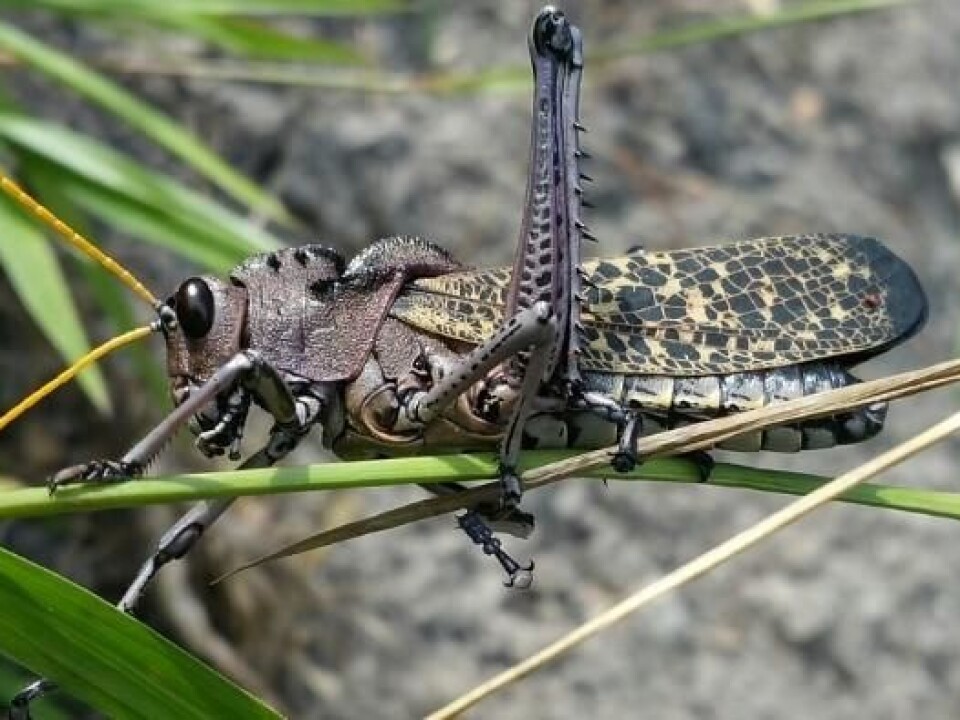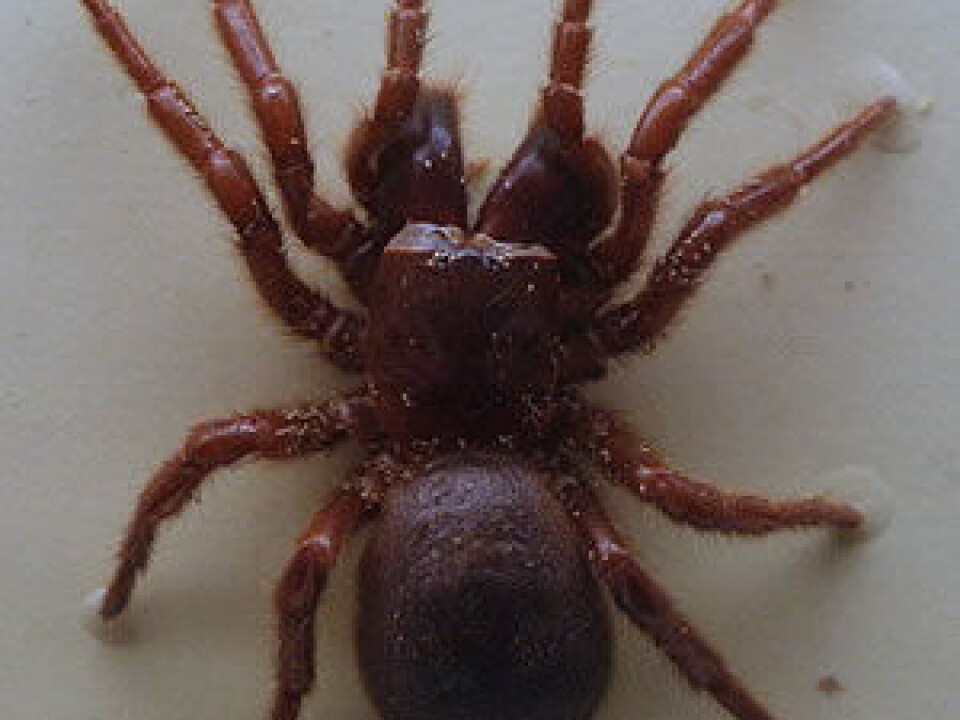
From lethal spider toxins to eco-friendly pesticides
Biological insecticides are naturally derived pesticides that represent an environmentally friendly alternative to many of the existing pesticides used in agriculture. More recently, spider toxins have been employed to develop highly specific pest control agents that have been introduced to the market.
The human population is currently growing at an unprecedented rate. The global population is predicted to reach 9.77 billion people by the end of 2050, before peaking at more than 11 billion in 2100.
The consequences of this population boom will directly affect food availability, supply, and distribution. As agricultural landmass is limited, crop yields need to be greatly increased in order to sustain population growth.
Arthropods are invertebrate animals that comprise different classes of organisms, like insects and arachnids among others. They are a natural enemy of crops in the agricultural world. Arthropods are currently controlled by means of agrochemical pesticides, but these methods are no longer as effective as they were decades ago.
Furthermore, agrochemical pesticides seem to have a negative impact on both human health and ecosystems. They have contributed to the appearance of resistant insect strains, such as fruit flies resistant to malathion.

In addition, since most of the agrochemical pesticides are not specific enough against insect pests, many beneficial arthropod species, like bees or wasps, are also negatively affected.
Between 2005 and 2009, tens of approved chemical pesticides were deregistered by the US Environmental Protection Agency (US EPA) as a consequence of stricter legislation. This has created a need for alternative solutions.
Over the past years, there has been a renewed interest in the use of natural products as substitutes for the conventional chemicals. Focus has shifted towards environmentally friendly pest management methods, such as biopesticides.
As the name indicates, biopesticides are naturally produced compounds, or entire microorganisms, used for insect management and control in agriculture. More specifically, biopesticides aim to be eco-friendly and targeted towards specific insect species.
Toxin-expressing GM crops

Various sources of biopesticides have been studied in the past decades; GMO plants expressing some insect resistance genes or fungal pathogens are among the most popular ones.
Still, few of them are currently commercialized in the agricultural industry. The introduction of the first genetically modified (GM) crops in agriculture represented the initial step towards the development of biological insecticides.
These plants express the bacterial crystal toxin (Cry toxin) from Bacillus thuringiensis, a δ-endotoxin simply known as Bt. Cry toxins work against certain insects, such as flies.
However, after the introduction of these GM crops in the mid-1990s, the use of agrochemical insecticides for pest management drastically decreased all over the globe, and only few cases of resistance to Bt crops have been reported until now.
After the introduction of Bt crops in industrial agriculture, bioinsecticides have had a continuous annual increase. Currently, 90 percent of the biological pest control methods are based on Bt.
Monsanto Company has developed numerous Bt species, including wheat, corn, and tomato, which are widely sold and cultured all over the world. These GM crops express Cry toxins that make them resistant to insect plagues, avoiding the use of external pesticides.
After the introduction of Bt cotton for the control of butterflies and moths, more than 60 different variants have been registered for commercial use, and many crop species have been genetically modified and approved.
Fungi as a natural replacement for insecticides
Constant exposure of Cry toxins to pests accelerates the appearance of resistant insect strains. Alternative to Bt GM crops, insect pests can also be controlled by means of entomopathogenic fungi.
This biological insecticide, first introduced in the early 2000’s in Australia, benefits from the natural host of these parasites as a way to eradicate pests. Fungal spores germinate on the surface of the insect and penetrate through the cuticle, proliferating afterwards inside the host.
During this process, the fungi produce a series of enzymes that help the microorganism penetrate into the insects’ body, causing their death. Yet this insecticide is not always suitable as it usually takes more than a week to kill the insect.
Fungal bioinsecticides offer control against a wide variety of insect pests, like aphids, thrips, and whiteflies, without affecting beneficial species such as bees or wasps.
Spider venom is introduced to the market
Independent of the current biological insecticides, a special interest has now been directed towards venoms of insect predator species, such as spiders. Different studies have recently found that spider venom, even though it has evolved to be toxic once it is injected into prey, comprise compounds that are also toxic when ingested (see here and here).
These findings could lead to the development and expansion of a new family of much simpler biopesticides, whose cost of production and public safety may be provide them with benefits compared to traditional agroinsecticides.
Vestaron Corporation is the first biotech company to introduce spider venom peptides as natural insecticides. This US company launched the protein-based product Spear®-T in 2018, which is a user-friendly greenhouse biological pesticide that acts on specific target organisms, mainly chewing-type insect plant pests like thrips, white flies, and spider mites, without negatively affecting beneficial arthropod species, such as pollinators.
The active ingredient of Spear®-T is a compound found in the venom of the Australian Blue Mountains funnel-web spider, and it functions as a central nervous system inhibitor.
Targeted insect pests die within hours after oral ingestion or physical contact with the toxic protein. Its environmental presence is surprisingly short; its degradation occurs within two days when exposed to sunlight. Additionally, its cost of manufacturing is quite low.
The considerable success of Spear®-T in pest management prompted the development and future release of more biological insecticides based on spider venom.
Yet, trial tests and approval from the regulatory agencies are required before their upcoming commercialization, even though both bioinsecticides seem to be as promising in pest management as their predecessors.
Future concerns and improvements: The road ahead
Progress has been made in the field of biological insecticides. Significant funding and effort have been invested in the discovery, study, and development of agrochemical pesticide alternatives.
Despite the promising results achieved up until now, the transition to more eco-friendly insect management methods is still in the first stages of its final commercial implementation and acceptance.
Spider venom represents a whole new concept of natural insecticides. Their low cost of manufacturing, together with their effectiveness, may outcompete the traditional agrochemical compounds in an increasingly regulated market.
Even though the bioinsecticide family has slowly evolved over the past years, some concerns regarding the use of microorganisms as insect management has always hovered over them. The main reason for this is the fear of biocontamination of the food and uncontrolled spread of the microorganisms.
The addition of spider venom peptides as a new member to the bioinsecticide family has brought renewed attention to biological insecticides. Still, future research in the discovery and study of new bioinsecticidal compounds is required to better understand their impact on ecosystems and long-term safety in use. However, the future is bright.





